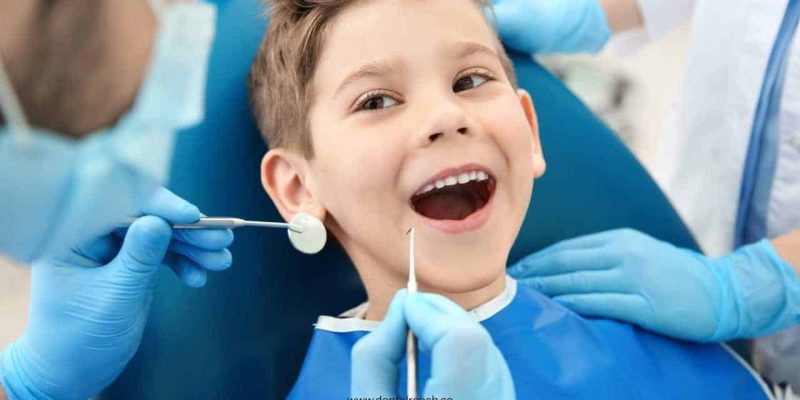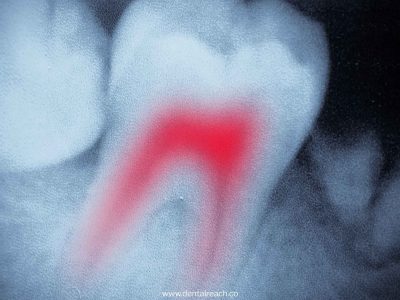Introduction
Good oral health is an essential part of overall health for children and teenagers. Majority of young patients visit the pediatrician more than the dental practitioner. Therefore, pediatricians are regarded to be at a unique position to provide preventive oral advice and to diagnose dental diseases in their patients at the earliest. According to studies, number of children (infants and 1-year-old) seen by pediatricians is approximately 89 percent as compared to only 1.5 percent who had dental visits every year.
Consequently, the ratio of visits to doctors versus visits to dentists is around 250:1. Data has also reported that the prevalence of Early Childhood Caries (ECC) is around 36-85% globally, while in India, it is 44%. In 1975, mothers hospitalized for one week following delivery of the infants were taught and prompted (for approximately 60 minutes) by dental hygienists about oral and dental care of their kids.
Five decades later, in an epidemiological survey, the kids of these motivated mothers were compared to healthy children of the area. The kids of the motivated mothers showed 64% less proximal caries on radiographs compared to other children. Therefore, the most crucial factor influencing preventive dentistry operation is the knowledge and function of pediatricians/physicians regarding their visit and oral health advice.
Nearly, all children have medical visits by their first birthday. As mentioned earlier, medical visits outnumber dental visits almost 250 times, for both babies and toddlers. Given this scenario, the health home provides a satisfactory and apt setting to deliver timely preventive dental health care. The American Academy of Pediatrics guidelines recommend that the primary health care provider should suggest an oral health risk assessment for babies before age 1 and dental referrals by age 1.
These guidelines are important because literature indicates that dental referrals by pediatricians raises the likelihood and timely visits to the dentist, especially in high-risk children with early childhood caries.
By acquiring the skills to conduct oral examinations, apply preventive strategies, counsel parents, and appropriately refer patients to pediatric dentists, pediatricians can help eliminate oral health disparities.
Preventive measures can be divided into different phases:
A. Stage 1- Pregnancy
Prenatal oral health counselling for parents is the first step towards infant oral health. The purpose of this stage is to create awareness among parents concerning oral disease and its prevention, along with giving a suitable atmosphere for child development.
Prenatal counseling
ECC is an early appearing, potentially devastating and virulent type of dental caries lesion. Both poor nutrition and low birth weight are risk factors for the development of this condition. ECC not only affects teeth, but also results in pain, illness, and impairment of oral functioning, which ultimately leads to malnutrition and diminished quality of life.
Under nourished or malnourished infants, and infants with low birth weight are at an increased risk of enamel hypoplasia or incomplete enamel formation. Enamel hypoplasia may lead to irregular tooth surfaces, which could result in areas prone to decay. Therefore, optimizing nourishment during the third trimester of pregnancy and first year of infant’s life, should be the priority of expectant mothers as this is when the tooth is undergoing maturation.
Prospective parents need to understand that prenatal assessment and instructions are essential for the oral health of their child. Prenatal assessment includes evaluation of the oral health conditions of the parent.
Parent’s risk of dental caries and gum problems has to be assessed –
Studies suggest an association between –
- Maternal periodontitis and preterm birth,
- Clinical periodontitis at delivery and preeclampsia, and
- Streptococcus mutans levels in mothers and caries experience in their children.
Uncontrolled caries in parent means that the parent has a high amount of Streptococcus Mutans, which can be transferred to the baby later. If the parent is at risk, dentist must provide preventive treatment and educate the parent on efficient plaque control. Nutritional counseling should be provided and the parent must be made aware about the risk of transmissibility of these bacteria to the infant. Regular follow-ups must be done to ensure establishment of
adequate oral hygiene measures, and good dietary habits. Mother’s oral hygiene, diet, and use of mouth rinses have a significant impact on child’s caries rate later on.
Anticipatory guidance
It is the process of preparing parents for the substantial physical, psychological, and physiological milestones of the child by providing practical and developmentally appropriate information regarding children’s health.
Comprehensive anticipatory guidance for the mother includes the following:
- Education concerning development of dental disease and it’s prevention.
- Demonstration of dental hygiene procedures and proper tooth brushing tech
- Counseling to instill preventive attitudes of healthcare and motivation for consistent efforts.
- Providing information to pregnant women about pregnancy g
- ingivitis. This condition is related to hormonal changes during pregnancy that cause an exacerbated response to dental plaque, resulting in inflammation of the gingiva. Gums become swollen, sensitive and tend to bleed. These signs become more evident in the second trimesterand peak during the last month of pregnancy.
- Visiting a dentist for examination and restoration of all active carious lesions whenever possible and decreasing chances of pregnancy gingivitis by proper oral hygiene measures.
- Eating – healthy foods such as fruits, vegetables, grain.
- Limiting – sugar consumption as frequent ingestion of foods high in sugar, such as toffees, cookies, cake, carbonated drinks (e.g., fruit juice, soda), raises the risk of tooth decay.
- Avoiding – foods that easily adhere to the enamel surface as frequent ingestion of dried fruit and candy, increases caries risk.
- Cleaning teeth thoroughly with fluoridated toothpaste and flossing every day to promote good oral health.
- Inhaling tobacco is injurious for your oral health. No smoking cigarettes or chewing tobacco.
Dental treatment of women during pregnancy
Frequently, pediatricians are asked for advice regarding dental problems.
Important information about the type of dental treatment which can be undertaken may be summarized as follows:
First Trimester: It is the most vital period for fetal growth. Only emergency dental treatment should be undertaken in consultation with the patient’s doctor.
Third and Second Trimester: Emergency as well as elective dental treatment can be provided.
Radiographs essential for diagnosis can be obtained with adequate protection (e.g., lead shields) but must be avoided in first trimester.
Local anesthetics must be favored for dental procedures.
Short waiting and appointment time should be kept for increased comfort of the mother.
Throughout pregnancy – Pregnancy gingivitis can be relieved through scaling at all times. Temporary fillings and access openings can be performed. Good oral hygiene and diet control programs can be initiated for the mother.
B.Stage 2- Infancy (0-1 year)
Kids with dental caries as infants or toddlers h
ave a much higher probability of succeeding dental caries in permanent dentition. The major reservoir from which infants acquire Streptococcus mutans is from their mothers (vertical transmission). Mothers with ample salivary reservoirs of Streptococcus mutans are at high risk for infecting their babies early in life.
Horizontal transmission (between members of a family) can also happen. Eliminating saliva sharing actions can reduce the growth of caries in infants. Frequent bottle feeding at night, and protracted use of a no-spill training cup are connected with the development of Early Childhood Caries (ECC).
Oral hygiene maintenance in this stage includes:
- Lowering mommies and siblings’ levels of Streptococcus mutans (ideally throughout the period) to decrease transmission of cariogenic bacteria to the child. This can be done through regular tooth brushing, use of fluoridated mouth rinses, and treatment of decayed teeth.
- Minimizing saliva sharing activities like lip-kissing between a baby or toddler and his/her family. Avoid testing the temperature of the feeding bottle with the mouth or sharing utensils (e.g. spoons). This practice can help to prevent transmission of decay causing bacteria.
- Always sterilize the feeding bottle in boiled water or a sterilizer.
- Avoid prolonged use of bottle feeding beyond 1 year of age. Switch to sippy cups. NUK orthodontic nipples can also be used since they are physiological and don’t cause any issues.
- Always clean the gum pads with a wet gauze piece or specialized tooth baby wipes after feeding. When child is below 3 months of age, swiping with wet finger is sufficient to clean the mouth.
- Prior to eruption of teeth, wrap a moistened gauze square or washcloth around the index finger of the hand and gently massage the teeth and gingival tissues.This relieves teething pain.
- Do not use a dentifrice (toothpaste) containing fluoride, because fluoride ingestion is possible. Do not use mouth rinses.
C.Stage 3 – First Dental Visit
American Academy of Pediatric Dentistry recommends that first oral examination should occur within six weeks of primary tooth eruption, and no later than age 12 months old i.e., child’s first birthday. Based on the child’s requirements and susceptibility to disease, a schedule can be recommended by the dentist.
D. Stage 4 – Deciduous Dentition
Eruption of the first primary tooth entails strict oral hygiene measures.
These measures are:
- If a baby falls asleep while feeding, the teeth must be washed using a moist gauze by the parent before putting the child to bed.
- Tooth brushing should be performed twice daily using a fluoridated toothpaste and a soft, age-appropriately sized toothbrush.
- For children less than 2 years of age, parents should use a ‘smear’ of toothpaste and for children aged 2-5 years old, a ‘pea-size’ amount of toothpaste must be used.
- A small, circular scrubbing motion is suggested for kids.
- Children should be taught never to swallow the toothpaste. Child- friendly toothpastes should be used which cause minimal harm on accidental swallowing.
- Dental flossing should be initiated when a toothbrush can’t cleanse adjoining tooth surfaces. Use of disposable Y shaped floss-holders makes flossing easier for the child.
- Utilization of mouthwashes is much better avoided as it involves the danger of ingestion. If it must be used, soak a piece of cotton in the mouthwash and after squeezing it, dab it along the teeth and gums of the child for a few seconds and rinse with water.
- Brushing ought to be supervised and assisted by the parent until 8 years of age.
Caries-promoting feeding behaviors that must be prevented in children –
- Babies should not be put to sleep with a bottle containing fermentable carbohydrates.
- Infants should be weaned from the bottle in 12 to 14 weeks old. Drinking from a cup should be encouraged by 1st year of age.
- In between-meal snacks and prolonged exposures to foods and juice or other drinks containing fermentable carbohydrates should be avoided.
- Repetitive ingestion of any liquid containing fermentable carbohydrates from a bottle or training cup should be avoided.
Conclusions and Suggestions
Mandatory pediatricians schooling: Pediatricians are well positioned to provide oral screenings and dental preventive care. Oral Health should be a necessary element of continuing medical education for pediatricians and it ought to be included in board certification and recertification actions. Such requirements will need to be supported by appropriate professional associations.
Medical-dental cooperation: Closer relationships between pediatricians and pediatric dentists need to be fostered at every level of the educational continuum to promote the development of evidence-based educational content, validated studies, and to guarantee favorable referral environments for the benefit of the pediatric patients.




















Comments